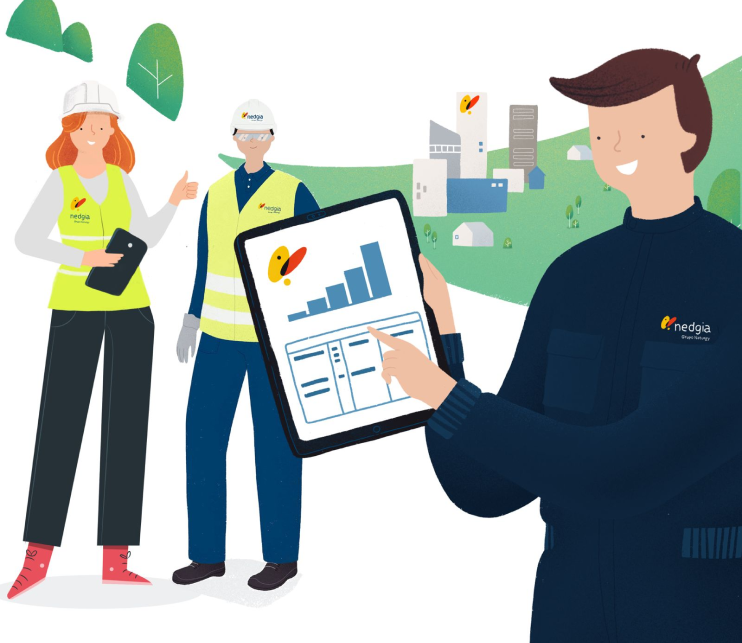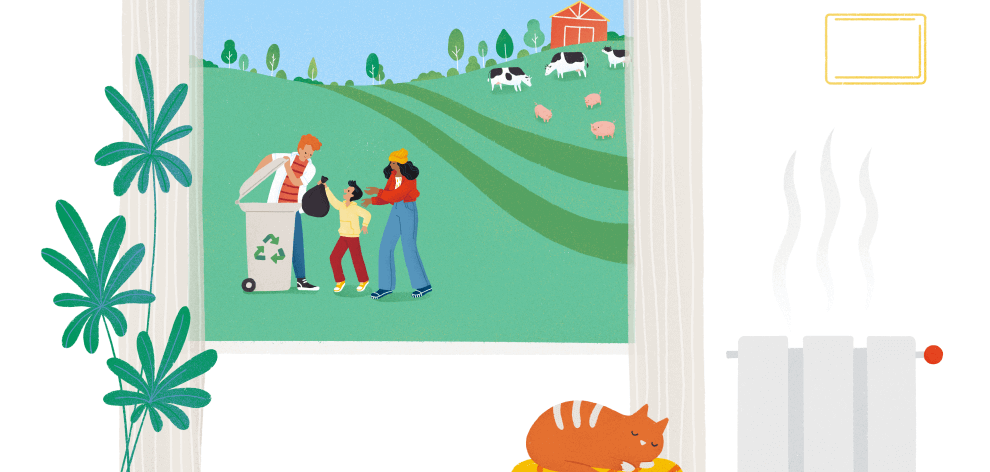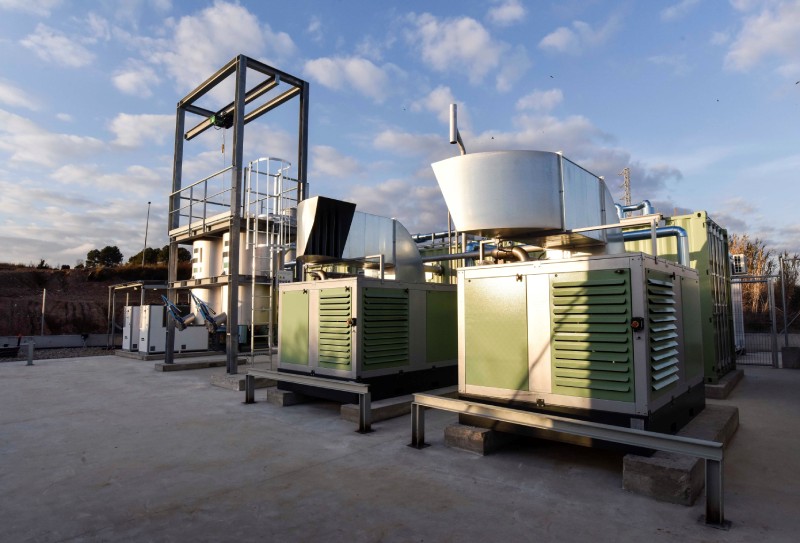We are the first company to inject renewable landfill gas into Spain’s gas distribution network. A milestone that reflects the company’s commitment to the energy transition and positions it at the forefront of innovation in developing this new energy vector, which will make a significant contribution towards decarbonising the country’s energy system.
The renewable gas plant, located at Parc de l’Alba in Cerdanyola del Vallès (Barcelona) next to the Elena landfill, represents an investment of €2.2 million.
This installation demonstrates the Naturgy group’s capacity to carry out this type of project thanks to the strength of our distribution network, which is prepared to distribute renewable gases due to the investments made in recent years, the existing gas infrastructure in Spain and its contribution to the security of supply.
Nedgia, and the Naturgy group, have the objective that all the gas circulating in our networks will be of renewable origin by 2050. We are digitalising all our distribution infrastructure with our sights set on the mass entry of renewable gases, and the group and has presented biomethane and hydrogen projects worth €4 billion in the various Declarations of Interest to drive collaborative projects as part of the Recovery, Transformation and Resilience Plan.
More than 3,000 households a year
The Cerdanyola del Vallès plant will produce 12 GWh of biomethane a year, the equivalent of the annual consumption of 3,200 households, and will avoid the emission of 2,400 tonnes of carbon dioxide equivalent per year into the atmosphere, a quantity equivalent to planting some 5,000 trees.
Part of the gas that will be injected into the network will be supplied as fuel for vehicles at Naturgy group stations, as it is a totally viable alternative for sustainable mobility.
The biomethane produced will enable energy to be used in a way that benefits the circular economy, in line with the Climate Change Act and the PNIEC (Comprehensive National Energy and Climate Plan).
These types of projects are also a clear reflection of our support for local energy production, very close to the main areas with the potential to generate biomethane (landfills, pig farms and wastewater treatment plants).
Potential of renewable gas and the circular economy
Renewable gases (mainly biomethane and hydrogen) are destined to be an active player as a renewable energy source, facilitating the integration of gas and electrical systems, supporting efficient waste management and contributing to the circular economy.
They help to resolve the environmental problem of emissions associated with waste management, until now released into the atmosphere, and recover both urban waste, agricultural and livestock farm waste, and also waste from wastewater treatment plants, thus creating circular economy models that also benefit waste producers.
Likewise, they contribute to economic development in rural areas and regional cohesion in areas facing demographic challenges.
According to the report ‘Los gases renovables. Un vector energético emergente’, published by the Naturgy Foundation the maximum renewable gas production potential in Spain could be the equivalent of 65% of the current total natural gas demand if it is purposefully developed.
The authors of this study maintain that if Spain develops all its production potential, it could reduce carbon dioxide equivalent by 35 million tonnes, that is, over 10% of the greenhouse gas emissions forecast for 2030. That is equivalent to the CO2 emitted by its entire fleet of cars in one year or absorbed across all forest areas in Spain in 2017.







